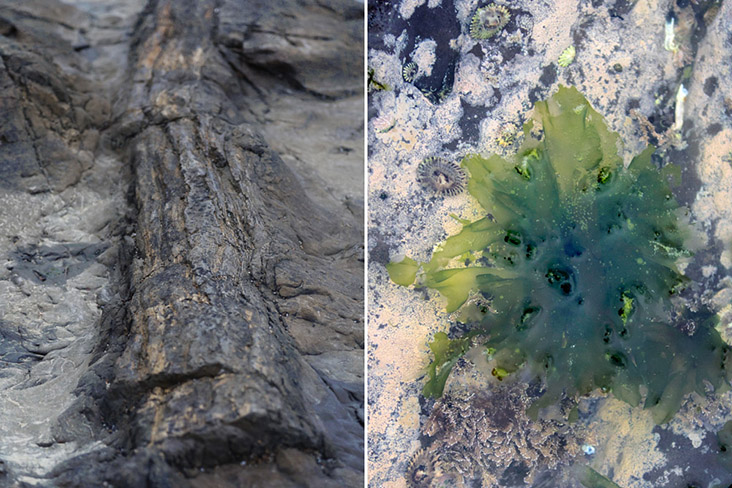CURIO BAY (New Zealand), June 24 — The sky was still bright but not for much longer. Dusk was encroaching. And no sight of our elusive feathered friend yet.
We were in Curio Bay, an alcove in the heart of New Zealand’s Southlands. The wild coastal shoreline was scenic but also otherworldly; even with our feet firmly on solid ground we felt transported to some distant realm.
No one would expect any less of the country where Peter Jackson filmed The Lord of the Rings trilogy. This is truly Middle-earth.
A few others, mostly tourists but also a couple of local volunteers, had joined us for the same purpose: to witness the rare Yellow-eyed Penguins returning from the sea. There was no guarantee of any sighting but we were eternal optimists.
Indeed we had driven all day from Dunedin and now here we were, finally. After parking our car, we headed uphill where the watchpoint was. Here one could see the entirety of Curio Bay.
Little did we know that beneath the waves, there was a fantasia frozen in time.
What a sight greeted us when we looked down! A lapidified lava field, from a forgotten age of violent volcanoes? Or something out of the land of Mordor, with vicious orcs waiting to leap out and ensnare unsuspecting hobbits... and humans?

But no. The obsidian landscape before us was actually a petrified forest revealed during low tide.
How curious! How could this have been alive once upon a time?
Yet this was no fairy tale. These truly were the fossilised remains of ancient trees and even ferns from the middle Jurassic period, 180 million years ago. More lifetimes than we could fathom.
As the sea eroded away the layers upon layers of surface sandstone, the preserved tree trunks and fern fronds — since transformed from wood into rock — were slowly exposed. There is no alchemy more powerful than time itself.

During low tide, amidst the petrified tree trunks, we spotted signs of more recent life underwater: strands of tiny seaweed and ropes of larger kelp, the occasional green “blossoms” of algae, shells and barnacles. The forest might have died a millennia ago but life still thrives here.
The cries of shags and seagulls pierce the silence of Curio Bay as we continued walking.
A kind gentleman, one of the volunteers, told us to enjoy exploring but to be careful as we clambered over the slippery rocks. To keep to the taped off areas for our safety but also to avoid scaring away any penguins as they come ashore.
These endangered Yellow-eyed Penguins (also known as Hoiho in Maori) are amongst some of the rarest in the world. Only around 6,000-7,000 birds nest here and they are extremely timid, which is why we had to stay clear.

The helpful volunteer told us he was a retiree and enjoyed sharing the colourful history and splendour of the local reserve to visitors. Nature at its wildest and best, he reckoned.
The penguins would typically leave the nest early in the morning, he added, to fish and feed. They would only return in the evening. Which was why while some of the visitors had left after getting their fill of the petrified forest, a small number remained.
We were all hoping to see a Hoiho.

Later the volunteer whispered to us where the best spot to wait was: not close to the waters but further inland. The penguins never hop out of the water where you’d expect them to but this was a good guess based on his experience.
Then, just as the sun began to set, the one we were all waiting for made its grand appearance, as clumsy and ungainly on land as it was graceful in the sea.
Everyone kept silent so as not to frighten it; we were all in awe to see an endangered species in its natural habitat. A survivor, this one.
The entire experience felt unreal, like a scene out of a movie. This felt almost the inverse of that infamous (and now iconic) scene from Zack Snyder’s Justice League, where Aquaman departed his discussion with Bruce Wayne by wading into the cold waters of the sea as an impromptu Icelandic choir of villagers burst into song.

Here now, half a world away, was a ragtag team of tourists and volunteers waiting with bated breaths for the penguins to emerge from the cold waters of the sea. No soaring songs but all of us doing our best to stifle our gasps of excitement, barely concealing our delight.
Which is to say this was a scene out of a movie, albeit one of our own making, that had been playing in our minds for days or weeks or months before this very moment.
There was no Jason Momoa, no rippling muscles or wicked tattoos, sure. But bewitching all the same.
Sometimes we only require to be granted what we had prayed for, for the penguin we had been waiting for all evening to finally appear, hopping onto the rocks like some minor miracle.

Sometimes we only require hope.
The Jurassic Park quote by the character Dr Ian Malcom — “Life finds a way” — holds true here. If the past year has taught us anything, it’s that Nature tries hard to recover too. And the memory of us that evening at Curio Bay, witnessing the march of that lone penguin, feels like some sort of recovery too.
The sea and the sand. The forest of stone. The penguin and the silence in its wake. The sense of calm, and of our souls healing.
For more slice-of-life stories, visit lifeforbeginners.com.






















